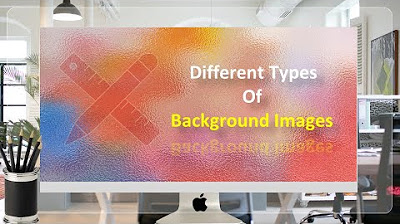Costruisco un proiettore LASER e proietto Nonno LASER - @SurvivalHacking @PierAisa @Kaoslaleggenda
Summary
TLDRIn this innovative video, the creator shares their journey of using a laser to create animated images on a transparent screen, a concept initially explored with an oscilloscope. They delve into the technical process, experimenting with audio signals to manipulate laser movement via motorized mirrors for drawing animations. Despite initial challenges with mirror alignment and signal frequencies, adjustments and creative problem-solving lead to successful projection of complex, animated shapes and texts. The highlight is an ingenious adaptation of a translucent screen for laser projection, reminiscent of aircraft HUDs, culminating in a playful demonstration of laser ping-pong. The video encapsulates a blend of technology, creativity, and DIY spirit, inviting viewers to explore the possibilities of laser animation and offering resources for replication.
Takeaways
- 😀 The script discusses the process of creating animations using a laser instead of an oscilloscope.
- 🔊 It explains the technical aspects of how the laser animation works, including the use of audio signals to control the movement of mirrors.
- 💡 The script highlights the challenges faced in mechanically controlling the laser to create precise animations.
- 🤔 It mentions previous attempts and the use of survival hacking to overcome obstacles in the project.
- 🛠️ The script describes the components used, including motors, mirrors, and audio signals, to manipulate the laser.
- 🎛️ It discusses the calibration process and adjustments made to optimize the laser projection.
- 🔍 There's an exploration of various experiments and adjustments to achieve better results, such as modifying signal frequencies and waveforms.
- 💻 The script mentions the development of software programs to facilitate the animation process and control the laser.
- 🎨 It discusses the creation of different animations and shapes, demonstrating the versatility of the laser projection system.
- 👨🔬 Finally, the script hints at future experiments and potential improvements to the laser projection setup.
Q & A
What was the initial experiment with an oscilloscope about?
-The initial experiment involved creating animations on an oscilloscope by moving a dot across the screen using X and Y inputs controlled by two audio signals, which were generated to move the dot in a way that would draw figures.
Why did the creator decide to switch from an oscilloscope to a laser for animations?
-The creator wanted to replicate the same concept of creating animations not with an oscilloscope but with a laser, aiming to explore a different medium for visualizing the animations.
How was the laser animation supposed to work mechanically?
-The laser animation was to be achieved by using a circuit with two motors mounting mirrors that could deflect the laser beam both vertically and horizontally. However, the initial setup only created random patterns, not the precise control needed for detailed animations.
What was the solution for achieving more precise control over the laser for animations?
-The solution involved using galvanometers, which are capable of rotating mirrors with high precision based on audio signals, allowing for accurate vertical and horizontal deflection of the laser beam to create animations.
What challenge was encountered when trying to project detailed animations with the laser?
-The challenge was that the laser setup, initially using mirrors attached to speakers, did not produce the desired effect. The breakthrough came with the use of galvanometers, which offered the precise control needed but required adjustments to work properly with the audio signals.
How did the creator test the new laser animation setup?
-The creator tested the setup by connecting it to a function generator and later a computer, sending audio signals to control the galvanometers and mirrors, thus projecting shapes and animations.
What modifications were made to improve the laser animation projection?
-Modifications included adjusting the audio frequency to match the galvanometers' capabilities, ensuring the mirrors moved at the right speed to create clearer animations without distortion.
How did the creator use the laser to project onto a transparent screen?
-The creator experimented with projecting the laser onto a piece of translucent plexiglass, which allowed the laser to be visible on the surface, creating the effect of a transparent screen.
What unique game did the creator develop using the laser projection technology?
-The creator developed a laser-projected ping pong game, showcasing the potential for interactive applications of the laser projection technology.
What was the purpose of sharing the video and its content according to the script?
-The purpose was to demonstrate the creative process and technical experimentation behind transforming video animations into laser-projected images, and to share the knowledge and software used in the project for educational or DIY enthusiast purposes.
Outlines

This section is available to paid users only. Please upgrade to access this part.
Upgrade NowMindmap

This section is available to paid users only. Please upgrade to access this part.
Upgrade NowKeywords

This section is available to paid users only. Please upgrade to access this part.
Upgrade NowHighlights

This section is available to paid users only. Please upgrade to access this part.
Upgrade NowTranscripts

This section is available to paid users only. Please upgrade to access this part.
Upgrade NowBrowse More Related Video

Cara Membuat iklan Video Animasi Menggunakan canva

How To Add Different Types Of Background Images In Oracle APEX Applications - Part 41

Animated gradient text with TailwindCSS

I Attempted The Wildest SOTD Scroll Animation Just To See If I Could (w/ Three.js and ScrollTrigger)

I Tried Selling AI-Generated Images on Adobe Stock | 2024 Earnings

New Method for Midjourney Character Consistency (Not the cref method)
5.0 / 5 (0 votes)